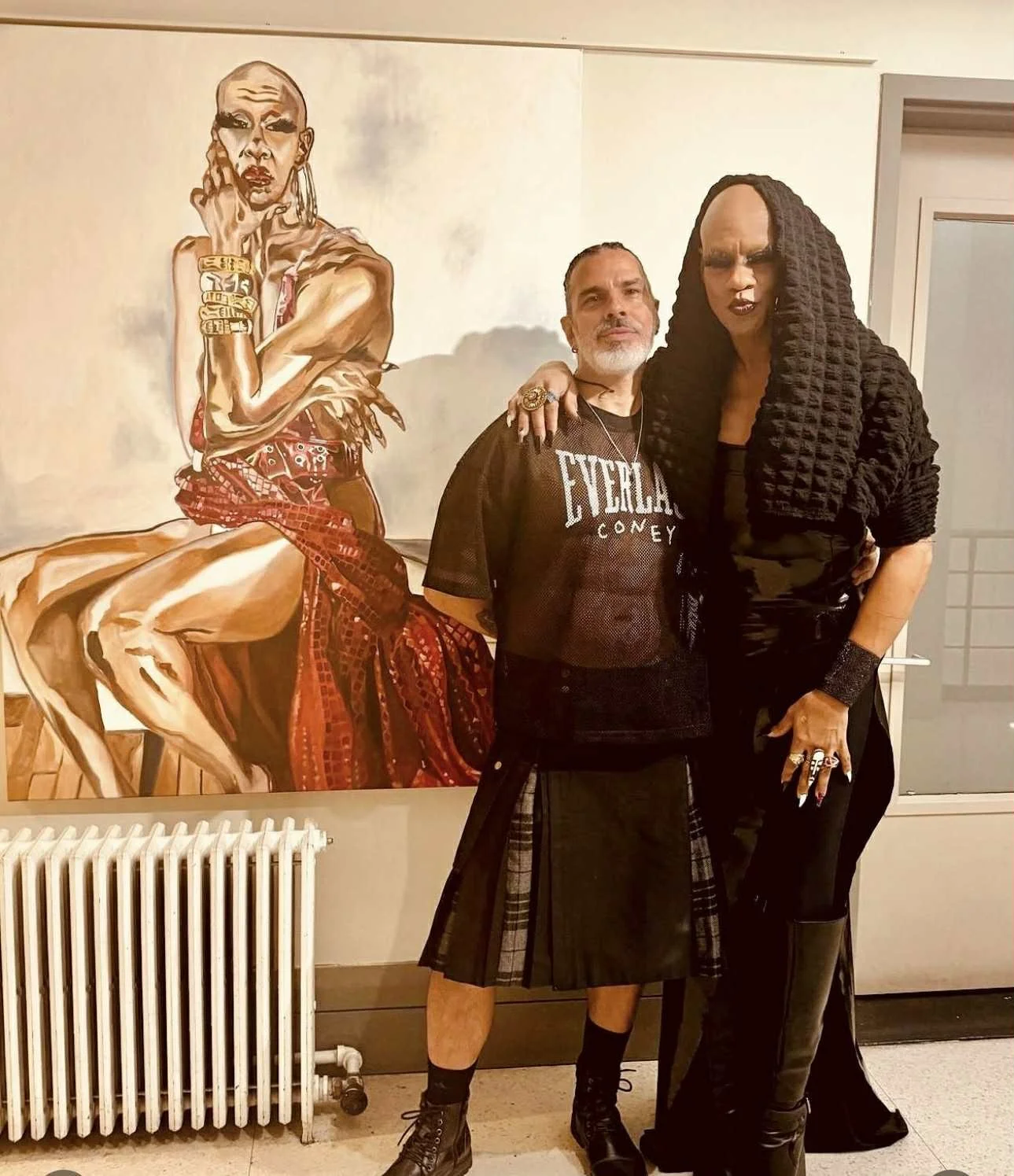My first impression on seeing Yiadom Boakye’s work at the Shainman gallery was that (because of the figuration, the brushstrokes, and the subject matter) that my work looks a lot like hers. I think when someone who makes comes across the work of someone who makes art that is so similar, it is both shocking (in an uh-oh way) but pleasant (in a kin-ship, I-knew-I-was-doing-SOMEthing-right way).
Like discovering you have a sister at 47, it’s fun to see yourself projected in another person, but it makes you question exactly who you are in the face of this close (and successful…and established) relative.
So it was a bit of sibling rivalry that was happening as I walked through the gallery.
The first thing, for me, that is most striking about Yiadom Boakye’s work is it’s scale. The bigger pieces are 70 X 78. The scale, for me, seems to make the work. It’s almost as if—if one wants to push back against the attack on figurative work—one must go big, bigger. One must be in the audience’s face with figures in terms of scale. Be brave with it.
The second thing about her work (at least the work displayed in the exhibition) was how similar it was (in terms of subject matter, poses, and costuming) reminiscent (or rather a response) to the work of Toulouse Lautrec who painted performers in costume. Here, in Boakye’s canvases are five men in dancer’s tights, two young men in black cat suits with frilly/furry collars).
The third quality I took notice of was the quickness in terms of execution of each piece. Boakye claims that her paintings never take more than one day and one sees this at close inspection: the brush strokes are quick, there is minimal worry over blending or even over-thinking of color, and the un-primed canvas comes through (beautifully) in many small patches in and around the figure.
Beyond these observations, in a time where racial segregation, oppression, and sanctioned murder by law enforcement still exists in this country, I have to wonder at what we are supposed to feel (if anything?):
Proud at the equality of representation the gallery has provided?
Proud of ourselves for taking in the work of a Black figurative artist?
Introspective when surrounded by Black figuration in a white-dominated institution (country/world)?
Should the past, present, reality of the day inform our experience with the work? Or should we read these figures in an Afro-futuristic way? Work beyond race.
I think it is too Utopian to say that the above questions are making too much of the work or straining the work with racial tensions just because they are figures of Black people. I wonder what the artist would say about these questions.
Work by Lynette Yiadom Boakye
Work by Peter Erik Lopez



